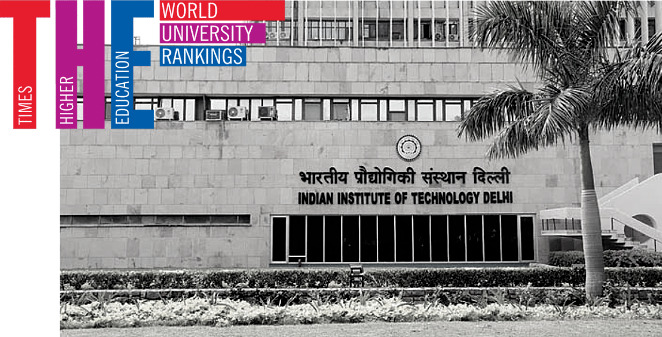A total of 71 Indian universities have made it to the Times Higher Education (THE) World University Rankings 2022, up from 63 last year. However, none of them has managed to breach the top-300 barrier as the Indian Institute of Science (IISc) – a regular in the list, sits in the 301-350 band for a third consecutive year. IIT-Ropar and JSS Academy of Higher Education find themselves in between the 351-400 band, while IIT Indore comes at the fourth spot, ranked between 401 and 500. However, one might be surprised to see none of the older IITs– Mumbai, Delhi, Roorkee etc. in the list. This is because, these institutes have boycotted the ‘THE’ rankings for the second consecutive year, owing to the lack of transparency in the ranking methodology and parameters.
IITs boycotted THE
Last year, the seven older IITs did not send their respective data for 2018 and 2019, for the 2020 rankings whilst citing, “The leading IITs i.e. IIT Bombay, IIT Delhi, IIT Guwahati, IIT Kanpur, IIT Kharagpur, IIT Madras and IIT Roorkee have decided to not participate in any of the Times Higher Education (THE) – World University Rankings this year (2020). These IITs will reconsider their decision next year if Times Higher Education is able to convince them about the parameters and transparency in their ranking process,”
The then Human Resource Development Minister Ramesh Pokhriyal ‘Nishank’ supported the IITs decision by stating that THE ranking lay too much emphasis on perception. He said, “Times and QS ranking downgrade our institutions on the basis of perception, I do not agree with that. Our institutions are doing a lot of good research, we cannot be judged only on the basis of perception,”
IIT Delhi director Ramgopal Rao on social media echoed similar sentiments and said that THE scores did not represent the true ranking of institutions. “In three of the ranking parameters, such as international students, international faculty and faculty-student ratio, our institutions score close to zero points. We don’t score well on perception-based parameters on a global scale.”
The layman might miss what Ramgopal Rao meant by ‘..we don’t score well on perception-based parameters on a global scale as the university ‘ but a close look at the workings of THE parameters gives us a sneak peek into the actual methodology of assigning rankings.
According to the literature available across the internet, THE ranks the universities based on performance indicators, grouped into five parameters: teaching (the learning environment), research (the volume, income and reputation), citations (or the research influence), international outlook (of staff, students and research) and industry income (that is the knowledge transfer).
It all boils down to the opinions of few chosen ‘intellectuals’
Simply put, the Times Higher Education (THE) World University Rankings are built on the insights of a representative sample of supposed global experts. THE conducts an Academic Reputation Survey, which according to its website forms the foundation for these rankings.
Meaning, the respondents who might not have been in touch with the work done by the IITs or other Indian institutions are asked to grade their top-15 institutions. No reasoning, no nothing whatsoever, simply based on the perception of few chosen elites, a major part of the rankings is decided.
A mass campaign to target IITs
The big, ubiquitous names such as Harvard and Stanford receive much more traction owing to their history and overall popularity. Meanwhile, the IITs, which do not have massive marketing or PR machinery, tend to lag. This perception is what Ramgopal Rao talked about while citing the phrase, “where the universities do not tend to perform well.”
And it’s understandable reasoning, for one, there has been a concerted attempt in recent times to malign the image of IITs. Routine accusations of Brahminism are hurled at these trusted and credible institutions.
The Indian left cabal in association with the global left media describes IIT as the home of Brahmins. It is alleged that non-Savarnas are deliberately failed in the top institutes of the country. These allegations are false as it is one thing to crack the entrance exams with the help of the quota system but, another to crack the academic exams where the only merit comes to the fore.
In July, Vipin P. Veetil, resigned as an assistant professor at IIT Madras citing he faced caste-based discrimination and since then, the liberal media has dubbed the entire IIT world as the home of Brahminical patriarchy.
However, foreign institutions such as Time used to sneering and looking down upon India to milk the opportunity to downgrade the rankings. It wouldn’t matter that routine news of racism against Asians comes from the top-ranking institutions of the US and the UK but, because India and its top Universities cannot be pushed further, the agenda continues.
The Indian Institutes of Technology are excellent academic institutions with the best-performing students in the field and very well accomplished faculties. So, in the grander scheme of things, these rankings do not matter much but what matters is the skewed methodology that Times uses to paint a false picture. Those looking for rankings, here in India, can simply go and do their research based on India’s own National Institutional Ranking Framework, or NIRF rankings.
